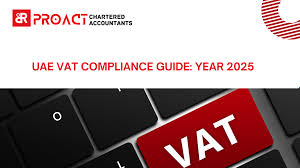Now Reading: Impact of International Tax Agreements on UAE Property Investments in 2025
-
01
Impact of International Tax Agreements on UAE Property Investments in 2025
Impact of International Tax Agreements on UAE Property Investments in 2025

Table of Contents
International tax agreements, particularly Double Taxation Agreements (DTAs) and Bilateral Investment Treaties (BITs), play a pivotal role in enhancing the attractiveness of UAE property investments in 2025. With over 140 DTAs and 106 BITs, the UAE offers investors tax efficiency, protection from double taxation, and safeguards against non-commercial risks. These agreements, combined with the UAE’s tax-friendly environment—no personal income tax, no capital gains tax, and a low 9% corporate tax rate—make its real estate market, particularly in Dubai and Abu Dhabi, highly appealing. This response provides a concise overview of the impact of these agreements on UAE property investments, focusing on tax benefits, compliance, and strategic opportunities in 2025.
Key Impacts of International Tax Agreements

1. Double Taxation Agreements (DTAs)
- Overview: The UAE’s 140+ DTAs with countries like the UK, Germany, India, and China (including a new UAE-Russia DTA signed in February 2025) prevent income from being taxed in both the UAE and the investor’s home country, covering income, capital gains, and dividends.
- Impact on Property Investments:
- Capital Gains: The UAE imposes no capital gains tax on property sales. DTAs often ensure these gains are taxed only in the UAE (0%), not in the investor’s home country. For example, under the UAE-UK DTA, a UAE tax resident selling a Dubai property avoids UK capital gains tax (up to 28%).
- Rental Income: Rental income from UAE properties is exempt from personal income tax in the UAE. DTAs reduce or eliminate withholding taxes on repatriated rental income. For instance, the UAE-India DTA caps withholding tax on dividends at 10%, benefiting investors using corporate structures for property holdings.
- Dividends from REITs: Dividends from UAE-based Real Estate Investment Trusts (REITs) are not subject to UAE withholding tax, and DTAs may further reduce home country taxes on these distributions.
- Implication: DTAs significantly boost net returns for foreign investors by minimizing tax liabilities in their home countries, especially for those with a UAE Tax Residency Certificate (TRC).
2. Bilateral Investment Treaties (BITs)

- Overview: The UAE’s 106 BITs protect investments from risks like expropriation, nationalization, or currency transfer restrictions, ensuring free repatriation of profits in convertible currencies.
- Impact on Property Investments:
- Asset Protection: BITs safeguard foreign-owned properties from government actions, offering legal recourse via international arbitration.
- Capital Mobility: Investors can freely transfer proceeds from property sales or rental income abroad, critical for global portfolios.
- Investor Confidence: BITs, combined with the UAE’s political stability, drive demand, as seen in Dubai’s 43.3% and Abu Dhabi’s 94.1% year-on-year transaction volume growth in H1 2023.
- Implication: BITs reduce investment risks, encouraging large-scale property investments in high-value areas like Palm Jumeirah or Yas Island.
3. Tax Residency and DTA Benefits
- Criteria:
- Individuals: Qualify as UAE tax residents by residing 183+ days annually, having a principal residence with 90+ days presence, or holding a UAE employment contract with 90+ days presence. A TRC, obtained via the FTA’s EmaraTax portal, is required for DTA benefits.
- Businesses: Entities incorporated or managed in the UAE are tax residents. Free Zone entities must maintain adequate substance to qualify as Qualifying Free Zone Persons (QFZPs) for 0% corporate tax on qualifying income.
- Impact:
- UAE tax residents leverage DTAs to avoid foreign taxes on UAE property income. For example, a UAE-resident German investor avoids German capital gains tax (up to 25%) on UAE property sales under the UAE-Germany DTA.
- Property investments of AED 750,000 ($204,000) or AED 2 million ($545,000) qualify for 2-year or 10-year Golden Visas, enabling tax residency and DTA access.
- Implication: Property investments facilitate tax residency, unlocking DTA benefits and enhancing global tax efficiency.
4. VAT and International Tax Alignment
- VAT Rules:
- Residential property sales (first sale within three years) are zero-rated (0% VAT), and subsequent sales/leases are exempt. Commercial property sales/leases incur 5% VAT, with input VAT recovery for registered businesses.
- DTAs do not directly affect VAT but align with the UAE’s OECD Common Reporting Standards (CRS) compliance, ensuring transparent income reporting.
- Implication: The UAE’s 5% VAT rate on commercial properties is lower than global rates (e.g., 20% UK, 19% Germany), reducing costs, while DTAs minimize additional foreign taxes.
5. OECD Pillar Two and Domestic Minimum Top-Up Tax (DMTT)
- Overview: Effective January 2025, the DMTT imposes a 15% minimum tax on multinational enterprises (MNEs) with global revenues over €750 million, per OECD Pillar Two. This primarily affects large REITs or developers, not individual investors or SMEs.
- Impact:
- MNEs investing in UAE real estate via corporate structures may face a 15% tax on UAE profits if their effective tax rate is below this threshold.
- DTAs allow tax credits in home countries, mitigating DMTT impact.
- Implication: Most property investors (individuals, SMEs) remain unaffected, benefiting from 0% capital gains tax and 9% corporate tax (on profits above AED 375,000).
Strategic Opportunities

- Leverage DTAs: Obtain a UAE TRC to claim reduced withholding taxes or exemptions on UAE property income in home countries (e.g., 0% on UK dividends under UAE-UK DTA).
- Secure Tax Residency via Property: Invest AED 750,000+ in real estate for residency visas, enabling DTA benefits and tax-free income in the UAE.
- Focus on Residential Properties: Benefit from VAT exemptions and zero-rated first sales to maximize returns compared to commercial properties (5% VAT).
- Use Free Zones: Structure investments through Free Zone entities (e.g., DIFC, JAFZA) for 0% corporate tax on qualifying income, ensuring QFZP compliance.
- Invest in REITs: UAE REITs (e.g., Emirates REIT, ENBD REIT) offer tax-efficient exposure to diversified properties, with no UAE withholding tax on dividends and DTA protections.
- Engage Experts: Consult tax advisors (e.g., PwC, CLA Emirates) to optimize DTA benefits and navigate home country tax rules.
- Monitor DMTT: MNEs should assess global tax positions to leverage DTA credits, minimizing the 15% minimum tax impact.
Compliance Requirements
- TRC Application: Submit Emirates ID, passport, or commercial license via the FTA’s EmaraTax portal (https://www.tax.gov.ae). Fees: AED 1,000–5,000 ($272–$1,360).
- VAT: Register if commercial property income exceeds AED 375,000 annually; file quarterly returns and retain records for five years.
- Corporate Tax: Businesses with profits above AED 375,000 must register and file returns by September 30, 2025, for a December 2024 year-end.
- eInvoicing: Prepare for the proposed eInvoicing system (consultation open until February 27, 2025) for commercial transactions.
- CRS Compliance: Report UAE-sourced income accurately to align with OECD standards, avoiding penalties.
Comparative Advantage
- Tax Savings: A $500,000 property gain in the UAE is tax-free, while the US imposes $75,000–$100,000 (15–20%) and the UK up to $140,000 (28%). DTAs ensure no additional home country tax for UAE residents.
- Investment Security: BITs offer stronger protections than in jurisdictions with fewer treaties (e.g., Singapore’s ~90 DTAs/BITs).
- Low VAT: 5% VAT on commercial properties vs. 20% UK or 19% Germany reduces costs.
Challenges
- Home Country Taxes: Non-residents (e.g., US citizens) must report UAE income, though DTAs and exclusions (e.g., US Foreign Earned Income Exclusion of $130,000 in 2025) mitigate this.
- DMTT for MNEs: Large investors face additional tax planning needs.
- Compliance Costs: TRC, VAT, and eInvoicing require robust systems and expertise.
- Free Zone Limits: Non-Free Zone property acquisitions by DIFC entities need 51% GCC ownership, requiring careful structuring.
Conclusion
In 2025, DTAs and BITs enhance UAE property investments by eliminating double taxation, reducing withholding taxes, and protecting capital, making the UAE a top destination for real estate investors. Leveraging tax residency, Free Zones, and REITs, while ensuring compliance with FTA regulations, maximizes returns. The UAE’s low-tax regime and 140+ DTAs offer a competitive edge over jurisdictions with higher taxes or fewer treaties. For tailored advice, visit the FTA’s EmaraTax portal or consult PwC or CLA Emirates .
WATCH MORE: https://www.instagram.com/reel/DJ633A8sHv8/
READ MORE: Real Estate Investment Trusts (REITs) in the UAE: Tax Benefits and Opportunities in 2025



















